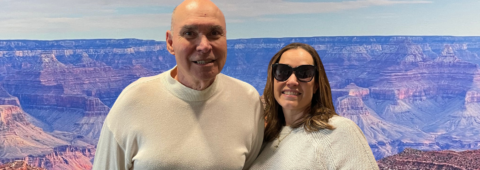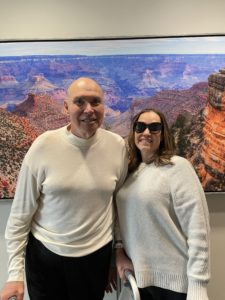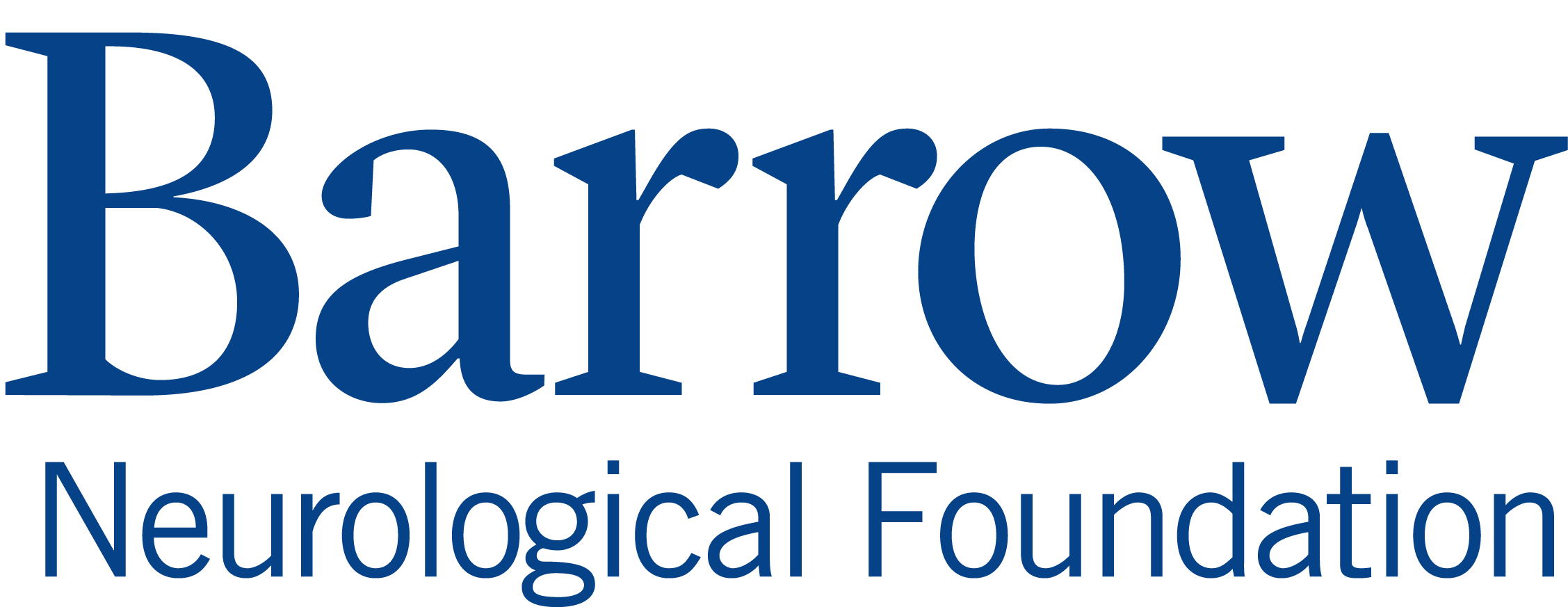
Barrow Saves Father and Daughter with Cavernous Malformations
Barrow Saves Father and Daughter with Cavernous Malformations
It was a typical Sunday afternoon in 1994 when the lives of the Lopez family changed forever. Rafe Lopez, who was working in Panama at the time, was coming back from a day out golfing. When he arrived home, his fourteen-year-old daughter, Maire, had a seizure. That seizure was followed by several more seizures, leading the Lopez family on a journey that would span across countries, states, and even into their past, as they desperately searched for answers.
 Debilitating Symptoms
Debilitating Symptoms
Maire’s seizures became increasingly intense and she eventually had to be medevacked to the hospital at the University of Virginia, where she received her first craniotomy. The surgeons found what they thought was an arteriovenous malformation (AVM) and were able to remove it successfully. Maire didn’t experience any more seizures. She finished school, got married, and had all but put the traumatic experience behind her. Then at age thirty-two, she started having excruciating visual auras. “The auras were so debilitating that they were literally driving me crazy. I told my husband I thought I would go crazy if I couldn’t find relief,” she says. Maire and her husband visited countless neurosurgeons looking for answers. They all said the same thing: if she received the surgery to remove the lesion in her occipital lobe, she would go blind.
Finding Hope at Barrow
In 2011, Maire finally found relief when her cousin told her about Barrow Neurological Institute. She sent her brain scans to Barrow and the doctors confirmed that she had multiple cavernous malformations—clusters of dilated blood vessels that are enlarged and irregular in shape. A few days later, Maire received a call from Robert Spetzler, MD, President and CEO of Barrow Neurological Institute, that would steer the course of her future. “He told us that he thought he could perform the surgery and save at least a little bit of my vision,” says Maire. “As soon as we heard the news, my husband and I flew down to Phoenix for the surgery. It turned out to be the biggest blessing of our lives.”
Since first coming to Barrow, Maire has had a total of five surgeries for cavernous malformations—two with Dr. Spetzler before his retirement and three with current President and CEO of Barrow Neurological Institute, Michael T. Lawton, MD. “I had met with a lot of neurosurgeons, but when talking to Dr. Spetzler and Dr. Lawton, I could just see the genuine kindness in their eyes. I can honestly say that those two men are the kindest people in the world,” says Maire. “For being so afraid and in such a vulnerable position in your life, having someone that really cares makes all the difference.” Three of Maire’s five surgeries were to remove cavernous malformations in her back occipital lobe, which left her severely visually impaired. However, she says that the surgeries were well worth it and is thankful for Dr. Spetzler and Dr. Lawton every time she is reminded that her vision isn’t completely gone.
“Patients with the inherited form of cavernous malformations can be difficult because, unlike the sporadic form of the disease that presents with just one malformation, the familial form presents with multiple malformations and even after several surgeries it’s hard to get to a cure. But the special part is that you develop a long-term relationship with the patient and, as in this case, their family members who may also need surgery. It has been enjoyable to know and work with the Lopez’s,” says Dr. Lawton.
Looking Into the Past
After it was confirmed that Maire’s cavernous malformations were genetic, her father, Rafe, decided to ramp up his search into his family’s history to see if he could find similar health patterns—he did. Rafe found that many of his mother’s siblings, their children, and their grandchildren suffered from related conditions. Up until that point, however, Rafe hadn’t had any symptoms of his own with cavernous malformations. He did have some problems with his knee, which his doctors thought were related to a back issue. When it got so bad that he couldn’t walk, Rafe went to see a physical therapist, who encouraged him to get a full-body MRI.
In February 2021, it was confirmed that Rafe had a large cavernous malformation across his spinal cord. He opted to have it surgically removed and spent the next six weeks in the Center for Neuro-Rehabilitation at Barrow. “Because of the placement of the cavernous malformation, I lost the ability to control my right leg, so I can’t really walk anymore. It was disheartening at first, but with the right therapies and right people on my team at Barrow, I have been able to learn how to adjust and do the things I want to do,” says Rafe.
It Takes a Village
When Rafe had his cavernous malformation removed, Maire experienced how the care and kindness Barrow offers patients extends to family members as well. She recalls one particular incident on the day of her father’s surgery. “I was walking out of the Neuro-ICU and got on an elevator with a nurse who was just finishing her shift. I thanked her for all that she does, and she said, ‘It takes a village.’ At that moment I just thought to myself, I am so blessed that Barrow is my village,” she says.
Maire still has some lingering effects of the cavernous malformations, including intense headaches. When she told her doctors at Barrow about the headaches, they immediately stepped up to find her relief. She was introduced to Kerry Knievel, DO, director of the Jan & Tom Lewis Migraine Treatment Program at Barrow, where she now goes every month to receive treatment. “Barrow just continues to enable me to live my life to the fullest. They really have my back and they truly care,” says Maire. “I’ve become a better person because I went to Barrow.”
